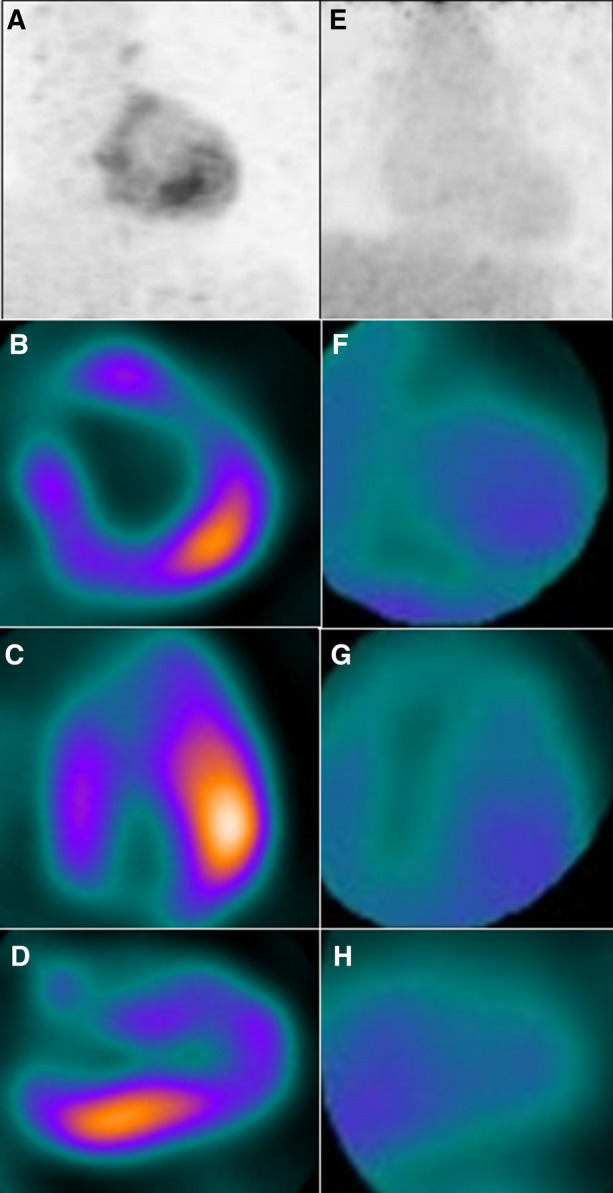Introduction
Novel coronavirus 2019 (COVID-19) infection related multisystem inflammatory syndrome in children (MIS-C) has been recently described.1,2 In this case report, we present the utility of 18F-FDG PET/CT in identifying myocardial inflammation in the setting of MIS-C.
Case Summary
A 14-years old male child, without any co-morbidities, presented with history of fever, and sore throat at the height of COVID-19 pandemic. This was followed by acute onset diarrhoea, arthralgia, dyspnea and bilateral angular conjunctivitis. Laboratory investigations revealed normal hemogram, renal and liver functions; however, his erythrocyte sedimentation rate (100 mm/h) and C-reactive protein (134 mg/L) levels were markedly high. COVID-19 reverse transcription–polymerase chain reaction (RT-PCR) assay was negative, but chest radiograph showed opacities in the lower lobes of bilateral lungs. Directed investigations for common infectious aetiologies were negative, as were the autoimmune markers. ECG showed tachycardia and PR segment depression while echocardiography revealed global hypokinesia with left ventricular ejection fraction of 45 to 50%. The patient also had elevated serum troponin t (348 pg/mL), ferritin (603 ng/mL) and procalcitonin (0.86 ng/mL) levels. COVID-19 antibody assay showed significantly high serum Immunoglobulin G (IgG) levels (> 10000 IU/mL). A provisional diagnosis of COVID-19 related MIS-C was made1 and the patient was referred for 18F-FDG PET/CT to assess myocardial inflammation. 18F-FDG PET/CT, performed after 18 hours of fasting and high-fat, low-carbohydrate diet preparation,3 demonstrated hypermetabolism in the inferolateral wall of the LV myocardium suggestive of active inflammation (Figure 1A, B, C, D). The patient was managed conservatively on oxygen, inotropes, diuretics and steroids. A second 18F-FDG PET/CT with the abovementioned protocol, performed six weeks later, showed resolution of hypermetabolism in the inferolateral wall (Fig. 1E, F, G, H) and was consistent with clinical and biochemical improvement. 18F-FDG PET/CT can thus have incremental role in the timely diagnosis and follow-up of this potentially life-threatening hyperinflammatory syndrome.
Figure 1.

Baseline maximum intensity projection (A), short axis (B), horizontal long axis (C) and vertical long axis (D) images showing increased 18F-FDG uptake in the inferolateral wall of the LV myocardium. Corresponding follow-up images (E to H) after six weeks showing resolution of hypermetabolism in the inferolateral wall with no other FDG avid focus
Acknowledgments
Disclosure
The authors declare no conflict of interest.
Footnotes
Funding
There are no sources of funding.
Publisher's Note
Springer Nature remains neutral with regard to jurisdictional claims in published maps and institutional affiliations.
References
- 1.Nakra NA, Blumberg DA, Herrera-Guerra A, Lakshminrusimha S. Multi-system inflammatory syndrome in children (MIS-C) following SARS-CoV-2 infection: Review of clinical presentation, hypothetical pathogenesis, and proposed management. Children. 2020;7:69. doi: 10.3390/children7070069. [DOI] [PMC free article] [PubMed] [Google Scholar]
- 2.Kaushik A, Gupta S, Sood M, Sharma S, Verma S. A systematic review of multisystem inflammatory syndrome in children associated with SARS-CoV-2 infection. Pediatr Infect Dis J. 2020;39:e340–e346. doi: 10.1097/INF.0000000000002888. [DOI] [PubMed] [Google Scholar]
- 3.Harisankar CN, Mittal BR, Agrawal KL, Abrar ML, Bhattacharya A. Utility of high fat and low carbohydrate diet in suppressing myocardial FDG uptake. J Nucl Cardiol. 2011;18:926–936. doi: 10.1007/s12350-011-9422-8. [DOI] [PubMed] [Google Scholar]


